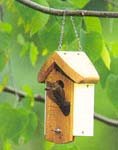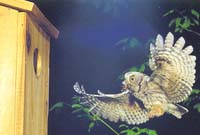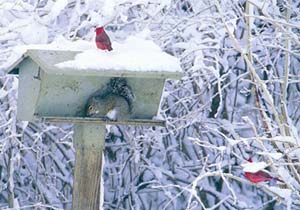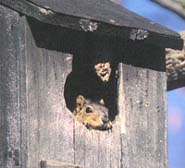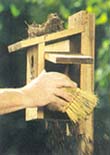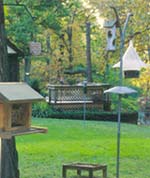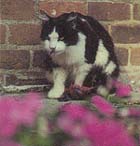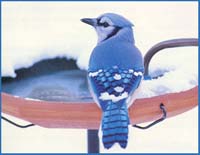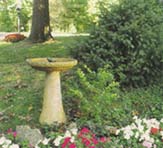|
Protecting Bird Habitat
Each year your state wildlife agency, private
conservation groups, the U.S. Fish & Wildlife Service, other
federal agencies, and many private landowners and business leaders
work together to conserve and manage millions of acres of
habitat-swamps, forests, ponds and grasslands. These habitats provide
nesting habitat for songbirds and shorebirds, ducks and geese, hawks
and owls.
You can make a difference in helping protect
habitats for migratory birds by joining Partners in Flight, a
consortium of the above groups dedicated to finding reasonable ways to
maintain the health of bird populations in the Western Hemisphere. For
more information about Partners in Flight, please contact U.S. Fish &
Wildlife Service, Office of Migratory Bird Management, 4401 North
Fairfax Drive, Arlington, VA 22203.
Another way that you can help preserve a
disappearing but valuable natural resource-wetlands-is by buying
Federal Duck Stamps at your local post office. Money from sales of
these stamps is used to protect wetlands. For more information, write
U.S. Fish & Wildlife Service, Federal Duck Stamp Office, 1849 C
Street, NW, Washington, DC 20240. |
|
Additional Readings
A Complete Guide to Bird Feeding. John V
Dennis. Alfred A. Knopf, 1994
30 Birds That Will Nest in Birdhouses.
R.B. Layton. Nature Book Publishing Company, 1977.
The Birder's Handbook. A Field Guide to the
Natural History of North American Birds. Paul Ehrlich, David
Dobkin and Darryl Wheye. Simon and Schuster, 1988.
American Wildlife and Plants: A Guide to
Wildlife Food Habits. A.C. Martin, H.S. Zim and A.L. Nelson. Dover
Publications, 1961.
A Field Guide to the
Nests, Eggs, Nestings of North American Birds. Colin
Harrison. Viking Press, 1984.
The Wildlife Gardener.
John V Dennis. Alfred A. Knopf, 1985.
A Field Guide to the Birds of North America.
Robbins, Bruun, Zim and Singer. Golden Press, 1983.
Trees, Shrubs and Vines for Attracting
Birds. Richard De Graff and Gretchen Wit. University of
Massachusetts Press, 1979.
Natural Landscaping. Designing with native
plant communities. J. and C. Diekelmann. McGraw Hill, 1982.
How to Attract Birds. Michael McKinley
Ortho Books, 1983.
Nature's Design. Carol A. Smyser. Rodale
Press, 1982.
The Natural History of Wild Shrubs and
Vines. Donald W Stokes. The Globe Pequot Press, 1989.
Songbirds in Your Garden. John K Terres.
Harper and Row, 1987. |
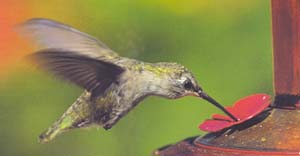
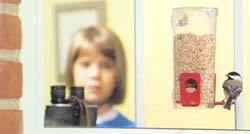
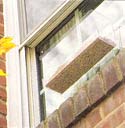
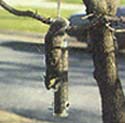
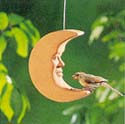
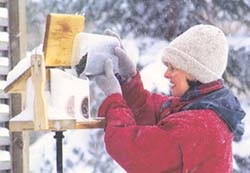
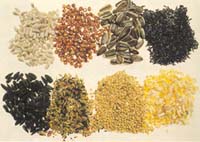
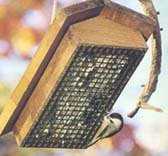
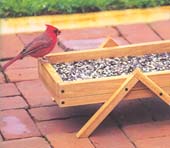
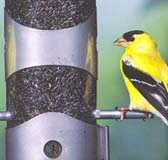
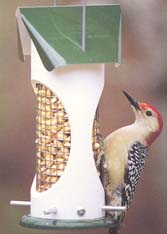
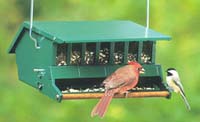
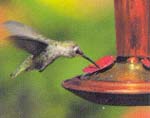
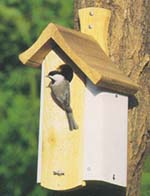
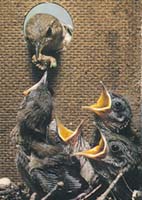 Wrens are known for filling a nest cavity with
twigs, regardless of whether they use the nest to raise their young.
Since male house wrens build several nests for the female to choose
from, hang several nest boxes at eye level on partly sunlit tree
limbs. Wrens are sociable and will accept nest boxes quite close to
your house.
Wrens are known for filling a nest cavity with
twigs, regardless of whether they use the nest to raise their young.
Since male house wrens build several nests for the female to choose
from, hang several nest boxes at eye level on partly sunlit tree
limbs. Wrens are sociable and will accept nest boxes quite close to
your house. 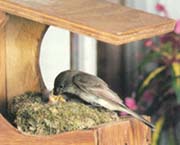 If you have the right habitat, like an open barn
or old shed, barn swallows and phoebes are easy to attract. It's their
nesting behavior, not their plumage or song, that catches your
attention. However, these birds tend to nest where you would rather
not have them: on a ledge right over your front door. To avoid a mess
by your door, offer the birds a nesting shelf nearby where you'd
rather have them.
If you have the right habitat, like an open barn
or old shed, barn swallows and phoebes are easy to attract. It's their
nesting behavior, not their plumage or song, that catches your
attention. However, these birds tend to nest where you would rather
not have them: on a ledge right over your front door. To avoid a mess
by your door, offer the birds a nesting shelf nearby where you'd
rather have them. 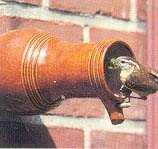
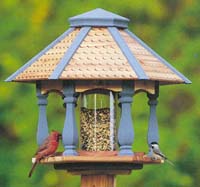 Decide which bird you want to
attract, then get a house for that particular bird. Look through any
book or catalog and you'll see bird houses of all sizes and shapes,
with perches and without, made of materials you might not have thought
of. recycled paper, gourds, plastic, rubber, pottery, metal and
concrete. The proper combination of quality materials and design makes
a good birdhouse.
Decide which bird you want to
attract, then get a house for that particular bird. Look through any
book or catalog and you'll see bird houses of all sizes and shapes,
with perches and without, made of materials you might not have thought
of. recycled paper, gourds, plastic, rubber, pottery, metal and
concrete. The proper combination of quality materials and design makes
a good birdhouse. 